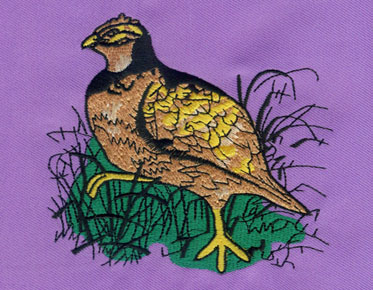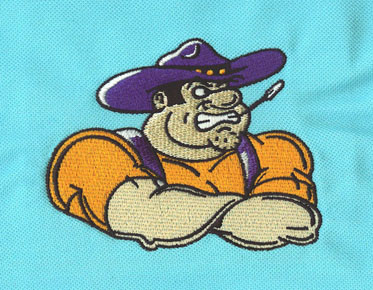Jump Stitches in Embroidery Digitizing And Why You Should Remove Them
Jump stitches are stitches made by an embroidery machine when it finishes stitching one object and needs to move to another to start stitching. They're not meant to be part of the design. You want them to disappear, and you can do that in a variety of ways. So, what's the best way to get rid of jump stitches? The following content also has some reference value for Eagle digitizing.
Why are there Jump stitches in machine embroidery?
Jumping stitches is often a necessary evil. When the two objects in the design are not connected in any way, the embroidery machine will need to move from one object to the other. It's nice when those travel stitches can be obscured by another part of the design, but that's not always possible.
For example, consider an embroidered name. There are naturally spaces between letters, and there is usually no other way to get from one letter to the next without jumping wires.
Disadvantages of Jumping stitches
When the machine makes these little jumpers between letters, they tend to be small, which makes removing them very tricky. So when you remove the item from the hoop, some cleanup is required to make the item look good.
Jump stitches are a bit of a pain because they tend to pull on the fabric in an inconvenient way when you try to embroider, which can lead to wrinkling. I've also experienced my embroidery machine hanging over an existing Jumping stitch as it goes deeper and deeper into stitching designs. It's always a good idea to trim jump stitches between seam colors to avoid wrinkling and jamming.
How to Remove Jumpers
The best way to remove jumping stitches is to trim them very close to the project. However, carefully trimming them can be tricky unless you have the proper tools.
How to Cut Jump Stitches
The best way to cut jumping stitches is with a good pair of small pliers or scissors. These specialized tools allow you to trim so close to the fabric that jumping stitches essentially disappear.
I remember when I asked this question to the ladies at my local sewing/embroidery store, they directed me to my first pair of embroidery pliers. Wow - what a game changer. Since then, I've learned that many different specialty pliers and scissors can be very effective at removing jumping stitches. Here are some of the best.
How
to hide jumping stitches?
Some jumpers - especially those created by stitching out tiny letters are too difficult to remove. In this case, it's usually easier to camouflage them. A clever technique is to invest in a pack of fine-tipped sharpie markers in a variety of colors. You can simply use a sharp touch jumper that matches the background fabric. The thread will absorb the sharp ink and the jump stitch will blend in nicely with the background.
How to avoid stitching designs with lots of jump stitches
If you don't digitize the embroidery design yourself, you're effectively at the mercy of the digitizer from which you purchased the embroidery design. A good digitizer plans her designs ahead of time to minimize the length and number of skip stitches in the design.
Once you start buying embroidery designs from various digitizers, you may notice that some designs from some designers have fewer jump stitches than others. This factor may inform your opinion on who to buy embroidery designs from in the future.
Alternatively, you can take another approach. If you are sewing a design with a lot of jumping stitches, contact the digitizer to let him or her know. It may be helpful for the digitizer to know that there is a problem with the design. It's probably not the digitizer's fault, but a bug in the software when saving the design in a different file format. Once the digitizer is alerted to a problem, he or she may revise the file, reduce the number of jumping and send you a new version.
How to reduce jumping stitches in digital
design
If you're a digitizer and want to make
embroidery designs with minimal jumping stitches, you really have to think!
While there are tools in most digitizing programs to automatically reduce the
number of jump stitches in a design, sometimes you have to do some clever
tricks to really hide them.



